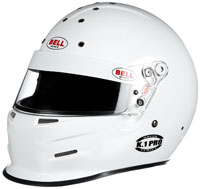Where have all the 2020 helmets been?
Every 5 years, the Snell Memorial Foundation rolls out a new "SA" (Special Application) helmet standard. And with each new standard comes a strict calendar for the testing, manufacture, and rollout of helmets certified to the new standard. To ensure a level playing field, Snell typically does not allow sales of the new helmets until the fall of the year of the SA standard. SA2020 was no exception, with sales of SA2020 helmets beginning in October 2020.
Are SA2020 helmets even being made yet?
Yes. Helmet manufacturers with SA2020 models should be in full production now. Some models began shipping immediately on October 1, while other manufacturers are expected to send their first shipments in the next few weeks.
What is the Snell SA2020 timeline?
May 2019: Snell publishes the SA2020 standard and begins testing helmets to the new standard.
April 2020: Snell releases SA2020 labels to certified manufacturers. Helmets certified to SA2020 may be manufactured but not be offered for sale yet.
June 30 2020: Snell stops shipping SA2015 labels. Note that manufacturers are still allowed make SA2015 helmets.
October 2020: Manufacturers may begin offering SA2020 helmets for sale.
March 31 2021: Manufacturing and shipping of SA2015 helmets ends.
Aren't the SA2015 helmets outdated?
The SA2015 standard will still be current for most racing organizations. Snell recommends that SA15-approved helmets in good condition should still be accepted (at least until the end of their recommended 5-year lifespan).
If I already have an SA2015 helmet, how long can I keep using it?
Even the best materials degrade over time, and the high-performance, lightweight materials in your helmet are no exception. Sunlight, ozone, perspiration, and even everyday bumps and knocks all take their toll on the shell and the inner liner. Snell recommends helmet replacement after 5 years of use, or immediately after any incident. Remember, the consequences of auto racing incidents can be violent and permanent. Only use safety equipment that is in top condition. When in doubt, replace it.
How long will an SA2015 helmet be good for?
Unfortunately, most racing organizations have not announced their changeover plans yet, so it is impossible to give a solid answer. Right now, we can only point to history and precedent.
In previous years, SCCA has accepted the current SA standard plus the previous standard (for 2019, that means SA15 and SA10). In the past, the rule has usually been updated to take effect after helmets with the newest standard have been available for one full year. For example, for the SA15 changeover, SA05 helmets were accepted until the beginning of 2017 (SA15 helmets went on sale in October 2015). For the SA20 changeover, SA10 helmets will be accepted through 2021. We expect that SA15 helmets should be accepted until the end of 2026. Note that an SA15 helmet purchased in 2021 will be at the end of its recommended 5-year life span in 2026.
But you must remember that every racing organization is different. Please check your rulebook.
How is the Snell SA2020 standard different from the SA2015 standard?
SA2020 is very much an incremental change from SA2015. The primary aim was to bring the impact testing even more in line with FIA 8859-2015 requirements. All criteria will now be the same as or more stringent than FIA requirements. Note that Snell SA2020 certification does not automatically grant FIA homologation! A helmet which passes Snell SA2020 tests will theoretically pass FIA tests, but the helmet manufacturer must submit the helmet to the FIA in order to receive FIA homologation.

